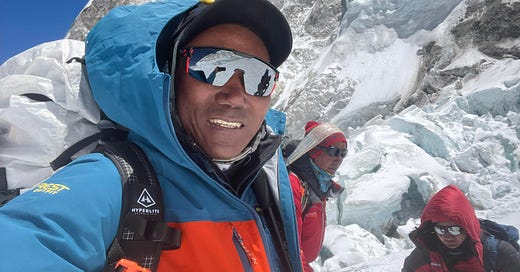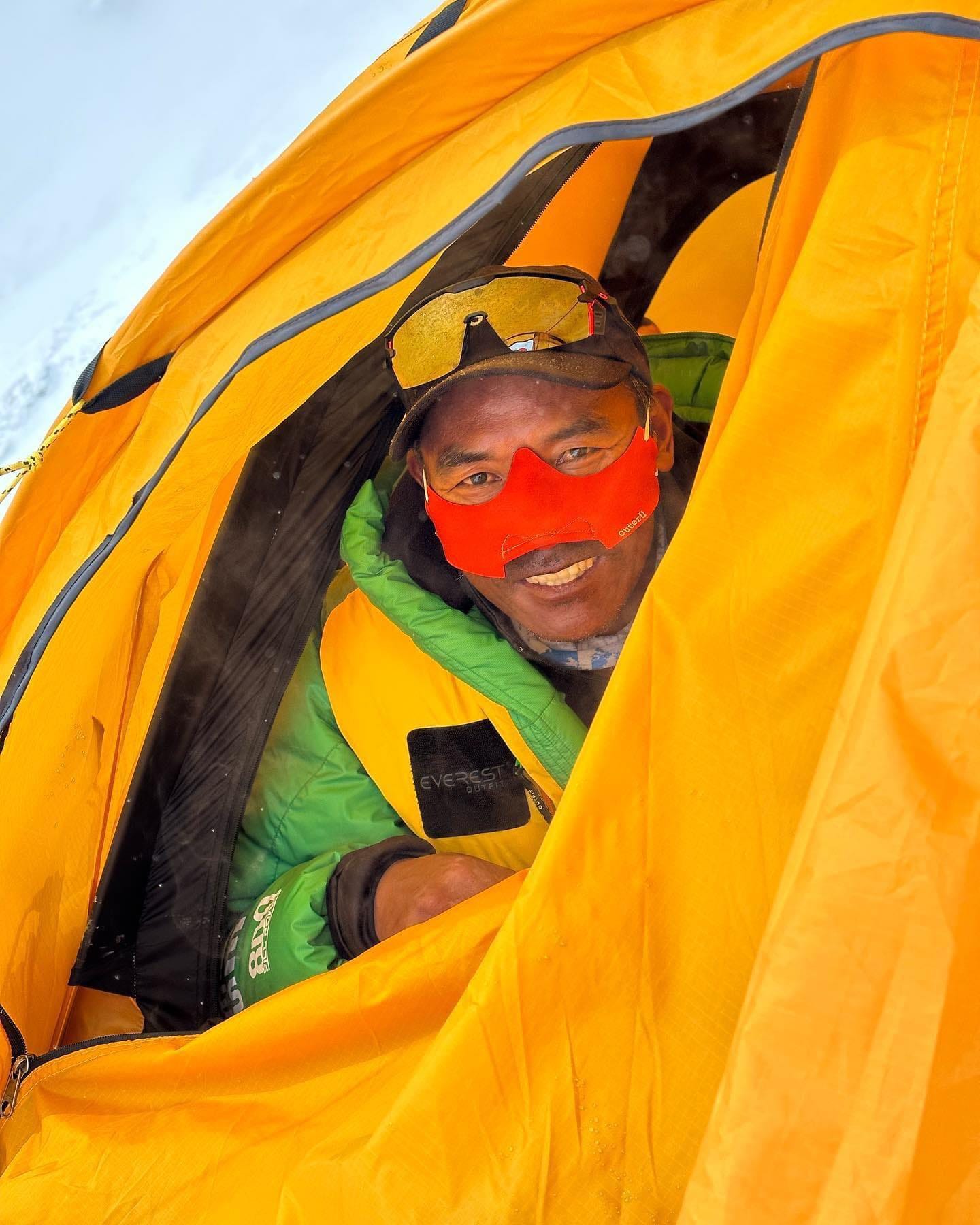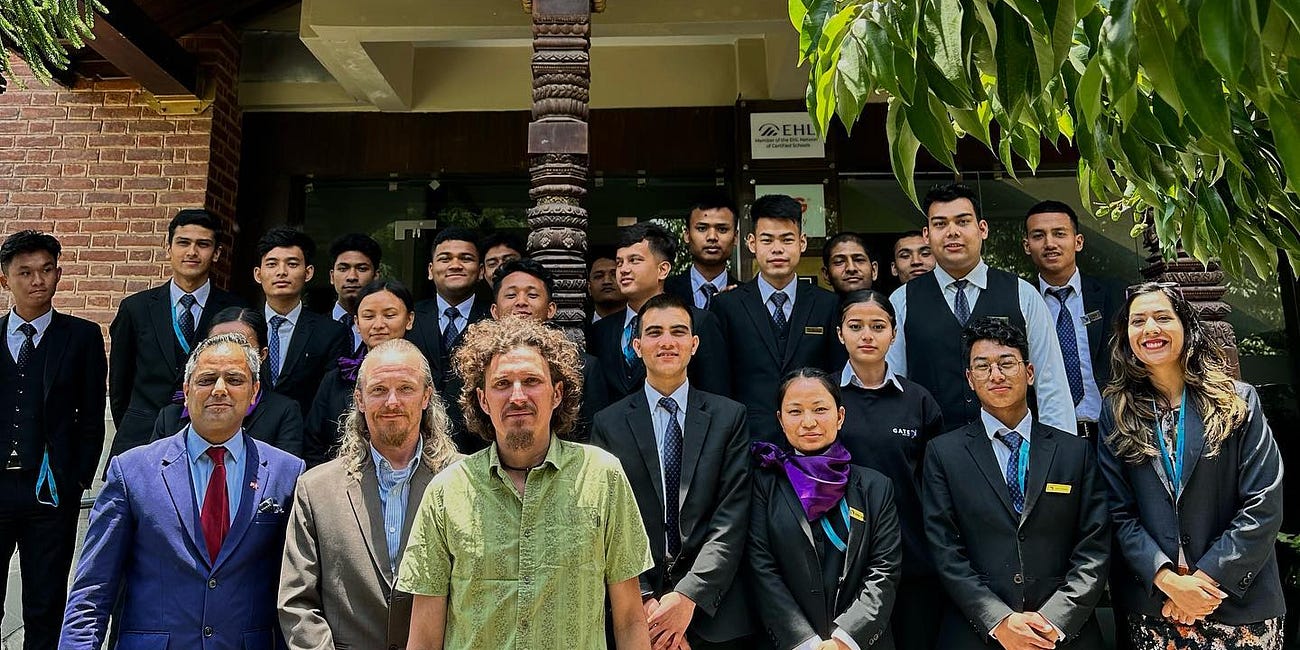A Conversation with Kami Rita Sherpa – the Man Who has Summited Mt. Everest the Most Times in History
One of Nepal's Great Success Stories
Visit the Evidence Files Facebook and YouTube pages; Like, Follow, Subscribe or Share!
Find more about me on Instagram, Facebook, LinkedIn, or Mastodon. Or visit my EALS Global Foundation’s webpage page here.
About two weeks ago, I took a chance and reached out to the mountain guide who holds the record for the most times summitting Mount Everest of any human in history. He was gracious enough to correspond with me.
Kami Rita Sherpa is one of a group of the world’s most elite climbers, Nepali Sherpas. Sherpas provide the backbone for climbing operations in Nepal. They do everything from setting up camp to overseeing the safety of the climbers. Elite Sherpas, like Kami Rita, are the ones who take the climbers from base camps to the peak. On Everest, this means exceeding 8,000 meters (26,000+ feet) in elevation.
Operating at such altitudes on a regular basis is an extraordinary physical achievement, and an acutely dangerous one. CNN reports that one-third of all the people who have died trying to summit Everest were Sherpas. That’s because elite Sherpas take on the most perilous role. They climb ahead to set up ropes and ladders that enable the climber-tourists to proceed.
In addition, when things go awry, it is typically the Sherpas who must save the day. This year’s climbing season has been a particularly deadly one. As of June 9, the death toll had reached 17 people. That’s an enormous number for a year without a large-scale disaster like the 2014 avalanche, or the 2015 Gorkha earthquake. At least three of the deaths this year consisted of Sherpas at an incident at the notorious Khumbu Icefall.
All photos provided to me by Kami Rita Sherpa himself.
Kami Rita summitted Mount Everest for his 28th time on May 23, his second summit of the peak this year. When I asked about this achievement—another of his world records—he was surprisingly humble about it, stating “I don't like to boast about my achievements as it is something I obtained doing my job.” And it has been his job for a long time, as working as a mountain guide has been a family tradition. Both his father and brother have worked on the mountain, including having made multiple summits.
If anything, Kami Rita prefers to use his fame toward helping Sherpas obtain the proper respect and support for their work. As he once told the BBC, “Without a Sherpa, there is no expedition.” Each year, the number of Sherpas reduces as younger climbers are moving toward different jobs. Part of the reason for this is that the Sherpa community receives scant assistance. While they make a very good salary for the climbing season, they are left with very little if things go badly.
For example, while expeditions are required to take out life insurance policies on the Sherpa guides they hire, the payout to families is very small—barely a year’s worth of income—if they are killed during the climb. Kami Rita has been advocating for the Nepali government to set up assistance programs for Sherpas and their families, such as retirement and education funds, for many years.
For climbers themselves, he emphasizes safety and preparation. He told me that mountaineers need to prepare their body for extreme elevations and brutally cold temperatures. For those joining him on Everest, this means training at base camp before even beginning any attempt at the summit. After all, for him, reaching the summit is always secondary to doing everything he can to ensure the safety of his clients. As he told the BBC in 2019, “There is a line. The moment I realise that any of my clients will not make it, I will abort the mission.” He stands by that principle still.
Conditions on Everest during climbing season have forced such decisions upon him more often recently. May is climbing season on Everest primarily because that is when the conditions are most favorable to reach the top. Yet, over the last decade, a changing global climate has had a profound impact on the predictability of weather and glacial stability. Warming temperatures have accelerated ice melt on Everest, leading to what scientists have called an “even more dynamic” destabilization of the Khumbu Icefall. This has also contributed to the increasing threat of avalanches as snow packs shift, melt, and thin. At the same time, weather anomalies occur more frequently as the previously ‘normal’ patterns give way to new, understudied phenomena. This year, temperatures dipped well below the norm, plunging as low as -40 degrees Fahrenheit/Celsius, nearly 20 degrees colder than usual.
With the mountain becoming more and more difficult even for the elite Sherpas, they are also forced to contend with growing numbers of inexperienced or ill-prepared climbers. Another experienced mountaineer told me this has much to do with the way Everest is marketed. Some companies offer ‘luxury’ packages that instill in climbers a false sense of security and over-reliance on their Sherpa guides. Many guides believe this leads to new climbers “underestimating” the challenges they will face.
Overcrowding also has been an issue on Everest for some years now, with pictures of long lines of people awaiting their chance to summit famously spreading across the internet. Getting caught in a long delay can expose climbers to higher risks of frost bite, hypoxia, or degrading weather conditions. For Kami Rita, part of his responsibility is to keep checking oxygen levels and evaluating the weather. Oxygen is as important for the descent as it is for the climb up, so if things do not go as planned, he will make the decision to continue or not. As the most experienced climber of Everest in the world, Kami Rita knows well the dangers posed by the mountain’s extreme weather. If he does not think the conditions are suitable to continue an ascent, the decision to turn back is final.
I asked him about the environmental situation on Nepal’s mountains and trekking trails. The environmental damage left behind by large numbers of visitors in the Himalayan region has been well-documented. Kami Rita emphasizes the importance of a ‘carry-in, carry-out’ mindset. Trekkers and climbers should come equipped with containers to handle their garbage and ensure it is not left behind. Furthermore, he told me, this must also include human waste. While often overlooked, large numbers of tourists relieving themselves in the Himalayan wildlands causes extraordinary damage to local plants and the ecosystem generally. Kami Rita said it is important that visitors do what they can to preserve local plant life, not destroy it.
During Everest’s off-season, he leads expeditions on several trekking paths and other mountain climbs. If you wish to join a trek led by one of the most famous guides in Himalayan history, you can reach out to him via the email addresses he has provided me:
Thank you Mr. Kami Rita sir, for taking the time to discuss these issues with me.
***
I am a Certified Forensic Computer Examiner, Certified Crime Analyst, Certified Fraud Examiner, and Certified Financial Crimes Investigator with a Juris Doctor and a Master’s degree in history. I spent 10 years working in the New York State Division of Criminal Justice as Senior Analyst and Investigator. Today, I teach Cybersecurity, Ethical Hacking, and Digital Forensics at Softwarica College of IT and E-Commerce in Nepal. In addition, I offer training on Financial Crime Prevention and Investigation. I am also Vice President of Digi Technology in Nepal, for which I have also created its sister company in the USA, Digi Technology America, LLC. We provide technology solutions for businesses or individuals, including cybersecurity, all across the globe. I was a firefighter before I joined law enforcement and now I currently run a non-profit that uses mobile applications and other technologies to create Early Alert Systems for natural disasters for people living in remote or poor areas.
To read more about eco-friendly tourism, check out the installments in my series on Sustainability in Tourism, Hospitality, Education, and Agriculture, below. For a recent article on climate change in the Tarai region of Nepal, scroll to the bottom.
Sustainability through Compassionate Education
This is the first installment in the Sustainability in Education, Agriculture, Tourism, and Hospitality. I interviewed Mr. Khem Lakai, the Founder and President of GATE College in Kathmandu. The Global Academy of Tourism and Hospitality Education (GATE
Cross-Cultural Communication for Sustainable & Regenerative Tourism
NHL Stenden University of Applied Sciences is located in Leeuwarden, Netherlands. A truly international school, it partners with institutes as far away as South Africa. One of its partnerships includes the Global Academy of Tourism and Hospitality Education (
Pushing the Limits to Create a more Sustainable World
Life fascinates sometimes. By virtue of my stay in Nepal, I had the great fortune to meet Professor (Assistant) Michal Apollo from the Institute of Earth Sciences, University of Silesia in Katowice, Poland, and a Fellow of Yale University’s Global Justice Program, New Haven, USA.
The Tarai is Baking
Nepal’s Tarai region is baking, literally. Here in Kathmandu, the temperature eclipsed its highest point so far this year, at an exhausting 33.3°C (92° for the Fahrenheit folks). During the day, absent any breeze, that temperature with its high humidity is stifling. And yet, it pales in comparison to the heat in the Tarai Region. Over the past week, the…










